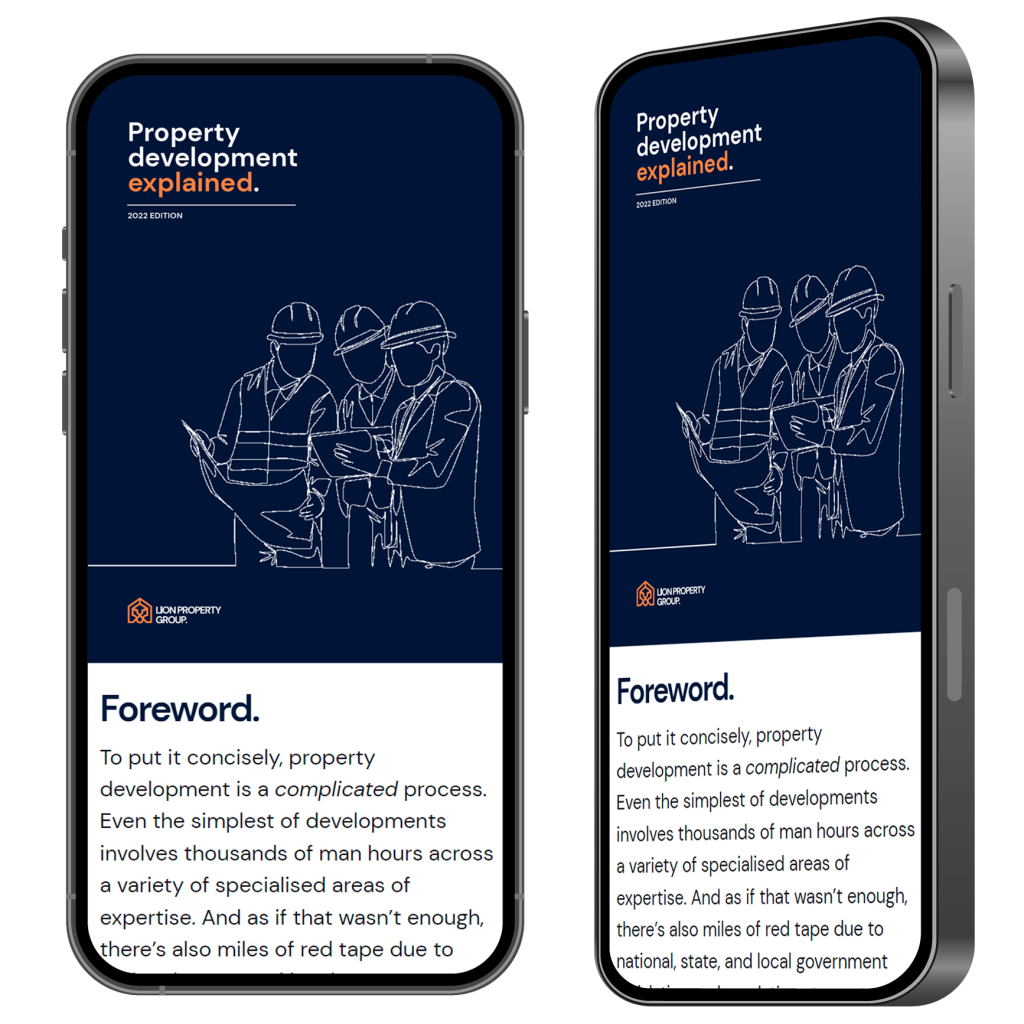Before we can set out to explain the process of undertaking a property development, we must first clarify what a property development is, and just as importantly, what it isn’t.
Property development, also known as real estate development, is a business strategy that encompasses a variety of practices designed to increase the value of a property so that it can be resold for a profit. On a smaller scale, this may include activities such as the renovation and resale of pre-existing properties (colloquially known as ‘flipping houses’). On a larger scale, this includes activities such as converting an established dwelling into multiple smaller dwellings or building on unused land.
A property developer is not a builder. Property developers are the people who oversee and coordinate all of the tasks and contractors required to complete the property development. This includes construction, but also includes other tasks such as site acquisition, design, permits, and much more. We list these tasks in more detail later in this book when we outline our process.
It’s also important to understand how a property developer makes money. Many people are familiar with the traditional property buy-and-hold strategy and assume that property developments make money the same way. This is true, but it doesn’t fully cover it.
With a buy-and-hold strategy, the asset does not change, but it’s perceived value does. What you own is identical to when you bought it, but market factors have changed the demand for the asset, and thus the price is different. This is like buying stocks in a company. If you buy 100 shares in a company, the value of each share may change, but you still only have 100 shares.
In the case of property development, the asset does change. As an example, if you start with a single detached home and develop it into six townhouses, you have fundamentally changed the asset. You have changed one thing into another thing, and the new thing’s value is separate from the old thing’s value. This is like transforming 100 shares in one company into 150 shares of another company.
The benefit of property development over a buy-and-hold strategy is that the developer is able to directly adjust the value of the asset themselves rather than being entirely dependent on market forces to make a profit. While a strong market certainly helps and will result in more profit, a property development can still be profitable even in a declining market. There are a variety of factors other than final sales price that also influence how much profit a particular development will generate, such as the purchase price of the land, contingency in the budget, construction costs, and loan interest.
Outside of undertaking your own property development, you can also choose to invest in someone else’s property development and make a profit that way. This is Lion Property Group’s business model: we allow other parties to invest their capital into our projects and we undertake the developments on their behalf.


